This article first appeared in The Washington Post.
It was a dream destined to die on its improbable, quixotic vine. And at many turns I felt that would’ve been for the best. But in the end, stubbornness, momentum and a love of skiing conspired, and there would be no turning back.
One October day, amid a renovation of our Takoma Park, Md.,home, our contractor informed my wife, Cathleen, and me that we’d need to be out of the house for January and February so he could finish the work. Even before the echoes of that conversation had wafted from our front porch, my mind had turned to skiing, and here’s why: I spend a distressing portion of my winters obsessing over the storm track out West, vicariously wallowing in powder from Alaska to New Mexico and wondering aloud — often way too aloud — why I live in a suburb of Washington, D.C.
Now I saw a shot at two months in ski country, living the dream. Of course, Cathleen and I would have to continue working. Our kids, Kai (13) and Christina (10), would also need an educational program. But after about 18 months of pandemic living, these obstacles seemed surmountable.
So, where to go? I wanted to avoid big resorts (too expensive) and metropolises such as Salt Lake City, which might remind me too much of home. After considering locales in Idaho, Montana and New Mexico, my compass kept spinning back to Nelson, British Columbia, a city I’d heard much about over the years but had never visited.
The factors behind this were few but critical: First, forecasters were calling for a La Niña winter, which tends to feature a more northern storm track; second, Whitewater Ski Resort, about a 25-minute drive from Nelson, receives about 470 inches of snow yearly and is renowned for its tree skiing, for which I live; third, season passes at Whitewater — a small operation with three old-school chairlifts and a rope tow — cost hundreds of dollars less than those at marquee resorts; fourth, British Columbia is on Pacific time, meaning we could work much of the East Coast day and still ski afternoons; and fifth, Nelson is stacked with quality restaurants, shops and services.
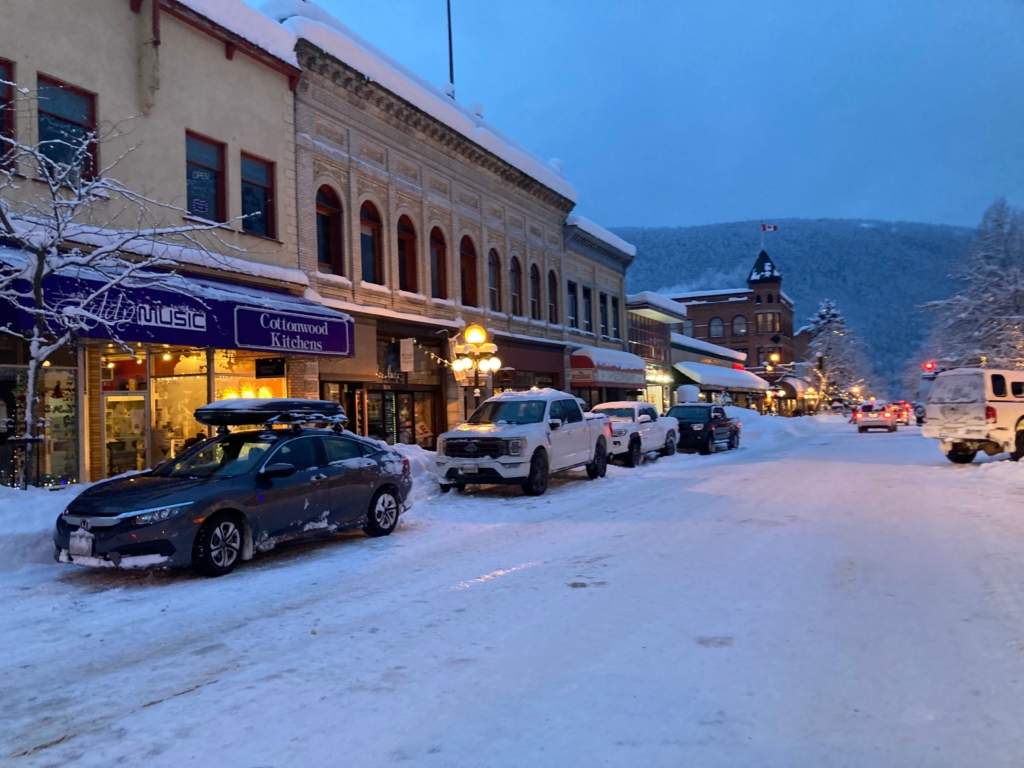
Next up: Securing family buy-in. The last thing I wanted was to hole up 2,600 miles from home with loved ones bitter over an agenda they were bullied into accepting. So I went straight for the eye candy.
When Christina saw the quintessential photo of Nelson in winter, a hamlet of early-20th-century construction stamped onto a snow-laden hillside above the west arm of the Kootenay River, her response was emphatic: “Dad, we need to go there!” Kai agreed, meaning it was time to lobby the most important vote in the caucus. What finally swayed Cathleen was news that the Airbnb I had targeted — a four-bedroom home six blocks from downtown, with a piano — was in growing demand. “Grab it,” she said, and minutes later we’d locked in our housing.
I then called Montgomery County (Md.) Public Schools and learned I’d need to withdraw Kai and Christina but could slot them right back in, with the same teachers and classes, when we returned. I would need to keep them on pace with their curriculum, but with that box at least faintly checked I moved on to …
… figuring out how to get a family of four, a dog and a boatload of gear across the continent. We’d need a car while in Nelson, but on a road trip in August, I had vowed to never again shoehorn the children and puppy — now more than 300 pounds combined — into the back seat of our 2010 Subaru Forester for a long drive.
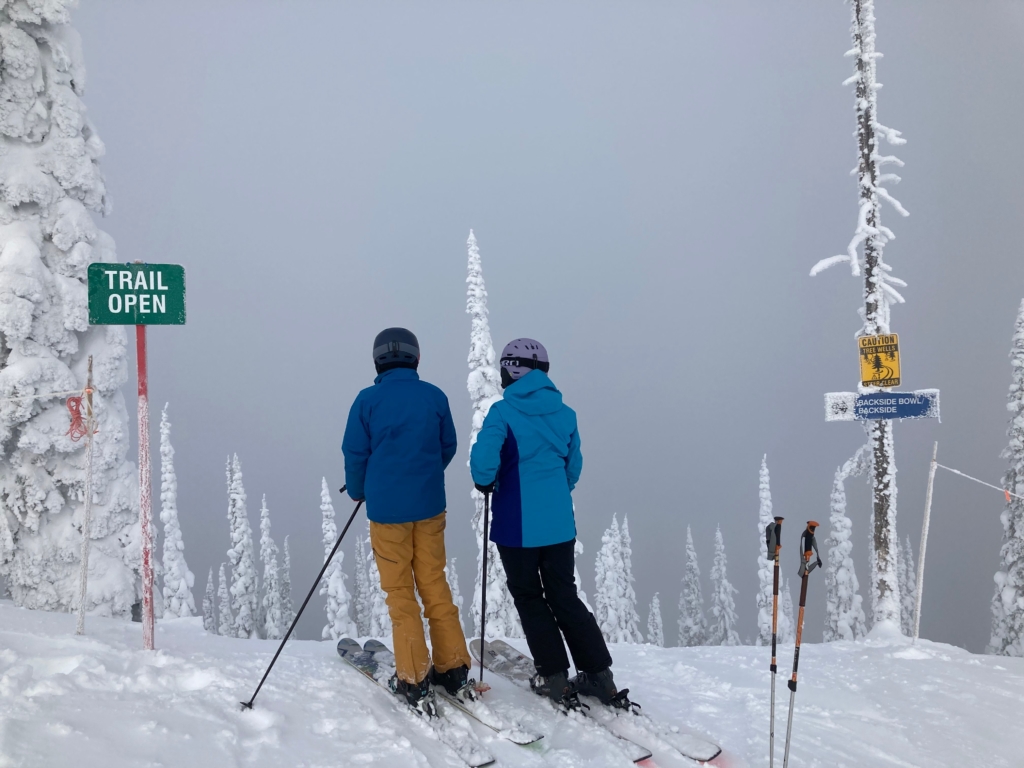
I thought about buying a new car, but amid a renovation and planning a two-month international relocation during a raging pandemic in the heart of holiday season, I decided not to do so. Long-term car rentals proved cost-prohibitive, which led me to the solution that Cathleen and the kids would fly — D.C. to Chicago to visit her parents, then on to Spokane, Wash., about 150 miles south of Nelson — while I drove with Ace, our 60-pound terrier-lab mix.
The requirements for getting into Canada triggered new worries. We were all fully vaccinated, but to cross the border, we’d also need negative coronavirus PCR results — from tests taken within 72 hours of arrival in Canada. Our rental home started Jan. 3. Cathleen, Kai and Christina were scheduled to land in Spokane the night of Jan. 2. My driving route took me through Chicago, where I initially planned to alight for two days with the family. So if we all got tested in Chicago on New Year’s Eve, and I then beelined to meet them in Spokane, and assuming no car trouble, flight cancellations or other delays, we’d make it to the Nelway border crossing with an hour or two to spare. This would mean back-to-back 15-hour days on the road between Chicago and Spokane, a daunting prospect for an already frazzled 55-year-old.
All of our information needed to be entered into an app called ArriveCan, and while careening around the Internet trying to manage all of this, I nearly typed my credit card data into a bogus ArriveCan site. The site mimicked the government version artfully, and I only paused at the critical moment because I hadn’t recalled reading about a fee to enter the country.
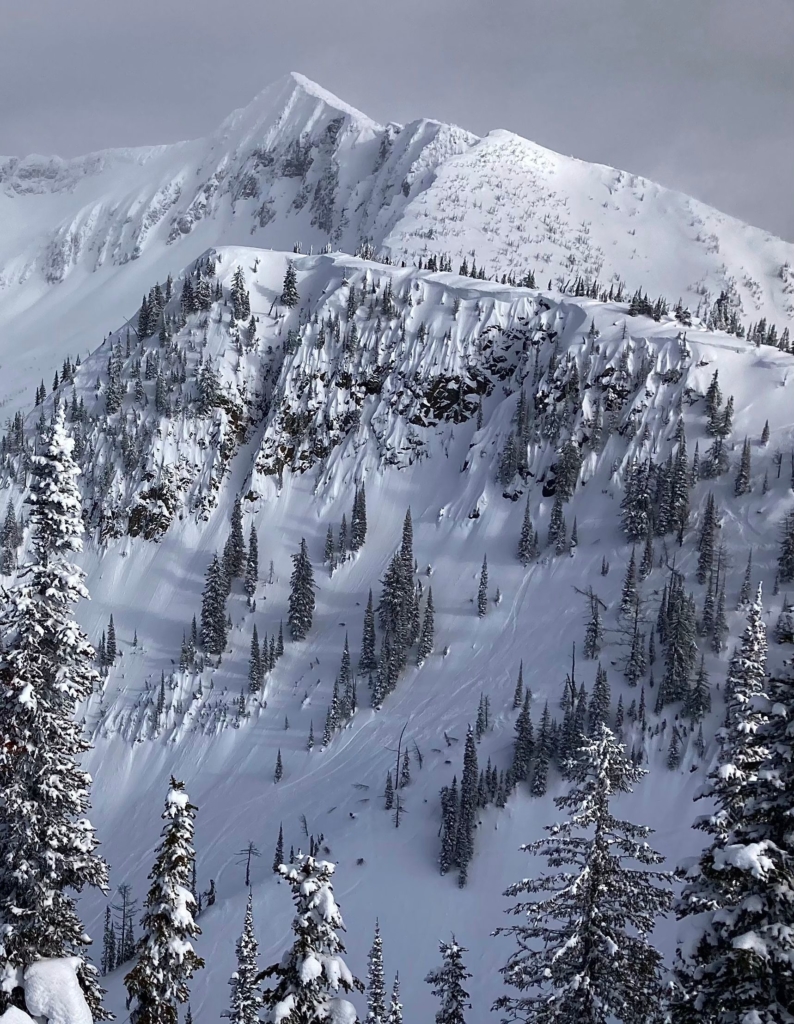
Around this time, in mid-December, I nearly cracked. Waves of anxiety knocked me about like a dinghy in a typhoon. Omicron was surging, and it was unclear whether the Canadian border would stay open. Airlines were canceling flights. Our contractor, looking around at our very-much-not-packed-up house, was reminding us of our move-out date. And it occurred to me with a shudder that I had committed to drive an 11-year-old car across the northern tier of the United States at the darkest, coldest time of year, solo. I pictured Ace and myself stranded on the shoulder of some Dakota highway amid a howling blizzard in the middle of the night, out of cellphone range and shivering through our final hours on Earth.
And, truthfully, I had no clue how I’d keep my children’s education progressing while working full time and skiing in the margins. I was reassured by a friend who noted, “Don’t worry! The totality of human knowledge is on the Internet,” including formal lessons on sites such as Khan Academy and Outschool. As with so much of my life, I finally conceded, I would be solving home schooling on the fly.
On the morning of Dec. 29, just before wheeling out of the driveway, I did one last check of the weather ahead, which, for days, had looked benign all the way to Spokane. Of course, today something had shifted: The forecast for Jan. 1 and 2 now showed an Arctic front dipping into North Dakota, with lows in Fargo and Bismarck, along my planned route, of minus-26 Fahrenheit and wind chills of 54 below zero. I’d be dead in an hour in that weather.South Dakota promised to be a balmy zero to 12 degrees over those two days, so that became my new course.Advertisement
My sense of foreboding refused to ebb. It didn’t help that through Maryland and Western Pennsylvania, the sky was a sheet of gray. Or that masking rates dropped at each successive gas and food stop from Breezewood, Pa., to Indiana. Or that I had no chance of making Chicago by dark and would be driving at night, which I had vowed not to do.
I was most stressed about what lay beyond Chicago: the unshrinkable expanses of Iowa, South Dakota and Montana, and the many unknowns about the weather, the Subaru’s capabilities and Ace’s tolerance for endless hours on the road.
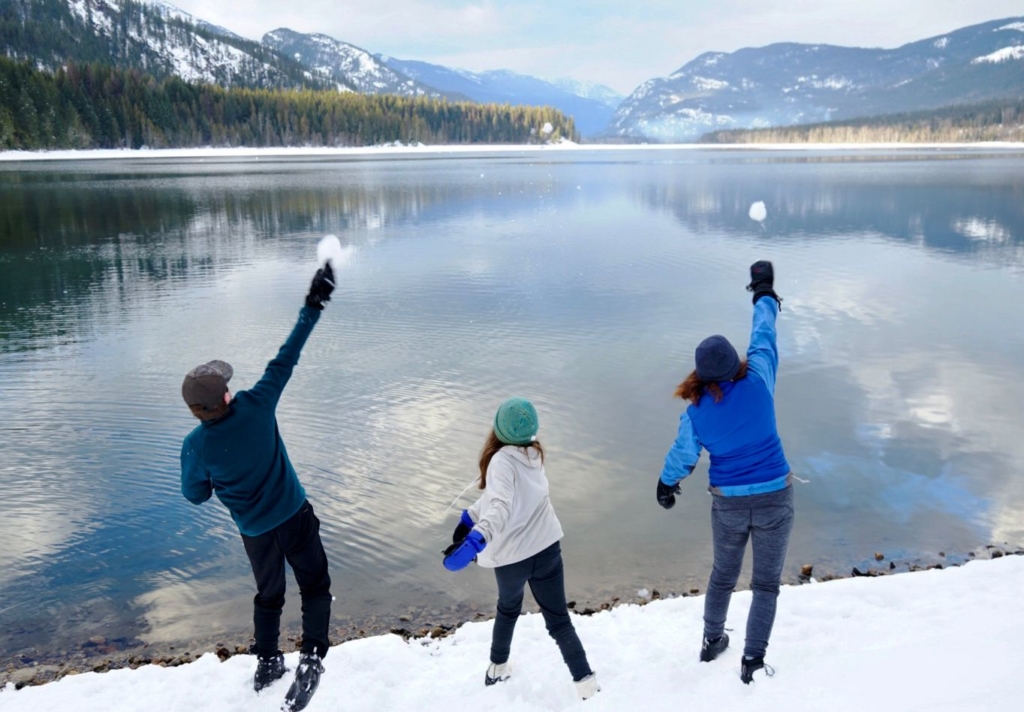
Somewhere in Ohio, it hit me that driving consecutive 15-hour days would be insane, so I further revised my plan: only one night in Chicago, then a hopscotch to Sioux City, Iowa; Rapid City, S.D.; somewhere in Montana; and finally Spokane. I called my wife and asked her to cancel my Chicago coronavirus test and find me one in Rapid City.Advertisement
I made Chicago uneventfully, and the grand plan was going okay until Ace picked up a scent during an off-leash pee break in an Iowa cornfield and took off, running at least a tenth of a mile away into a pocket of trees, where I heard him barking insistently as I set across the snowy, uneven expanse in pursuit. Fortunately, he came trotting back before I blew out an ankle. The next day, 20 miles along a vacant, rural road north of Sioux City, my “check engine” light lit up like a tiny, satanic avatar. I had seen this before, and my mechanic at home had deemed it a harmless mystery, but I was nonetheless unnerved.
By the next gas stop, in Mitchell, S.D., the temperature had dropped to 5 Fahrenheit, with below-zero wind chills and blowing snow creating episodic whiteout conditions. But in Rapid City, everything began to improve. I drove straight to the urgent care center Cathleen had found and, after taking the $200 test and waiting 30 minutes for my (negative!) results, continued on to the local Subaru dealer, where a mechanic graciously checked my car’s computer, cleared the errant code that was triggering the check engine light, and advised me to use higher-octane gas. He charged me nothing.
I found a park to walk the dog, picked up dinner and a beer from a local brewery, and settled into my next Airbnb — alone on New Year’s Eve, but optimistic about my fate for the first time in weeks. This buoyancy lasted about an hour. In sketching out my next day’s drive, Apple Maps helpfully included the “high-wind warning” that the National Weather Service had posted for parts of Wyoming and Montana. “Gusts of up to 50 mph with blowing snow will create dangerous windchills and blizzard conditions,” it stated. “Travel could be difficult to impossible.”Advertisement
I woke before dawn, walked Ace in the minus-7-degree morning, downed some coffee and set out. Somewhere in South Dakota, I refilled my windshield washer fluid and, because my hands were numb from the cold, accidentally let my hood slam down, after which it wouldn’t fully latch. I pressed it, pulled it, reopened and closed it — no luck. There were no open service stations around on New Year’s Day, and because the hood partially latched, I decided to tough out the next 90 miles to the larger town of Gillette, Wyo., which I hoped to reach without the hood snapping back up and blocking my windshield, cartoon-style, at 75 mph.
In the warmth of a Conoco gas station in Gillette, I Googled my problem, followed the advice of a forum poster to spray some WD-40 in there, and lo and behold, the hood latched tight. I felt triumphant, solving what could have been a disaster for under $7. After enjoying sublime weather and increasingly captivating scenery all the way to Billings, Mont., I decided to punch it to Bozeman, another two hours west. I thought I’d dodged the winds but, alas, 30 miles west of Billings, snow rose from the landscape in frenzied curtains, sweeping across the highway and blinding me as gusts pushed the Subaru around like a Matchbox car. I slowed to 30 mph — on Interstate 90 — flicked on my hazard lights and assured myself that if the few tractor-trailers I saw weren’t toppling over, I’d probably make it.
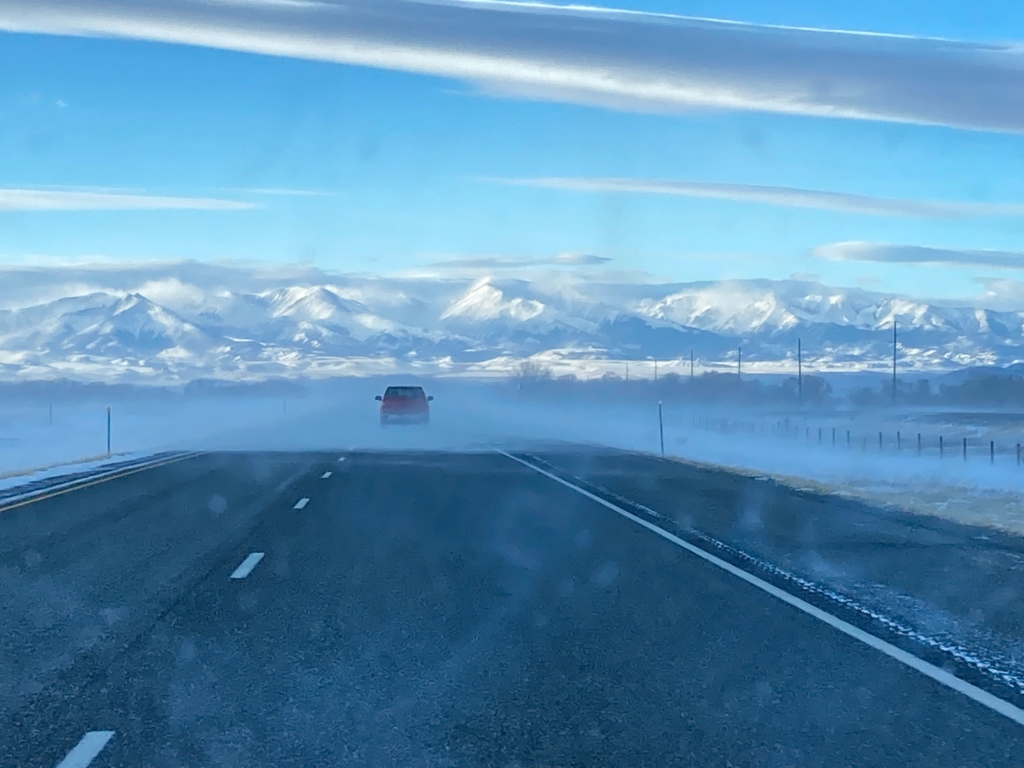
The next afternoon, after crossing the snow-spangled Rockies and skirting Lake Coeur D’Alene, Idaho, I rolled into a drab neighborhood just north of Spokane and yet one more Airbnb. The interior of the Subaru looked like a college dorm room at the end of finals — food wrappers, half-packed bags and road strew cluttering every quadrant. I texted Cathleen the address of the house, advised her to take an Uber from the airport and collapsed on the couch.
Jan. 3 brought a final surge of drama. After repacking the car to the last available square inch, we rallied through a winter storm that raged from just north of Spokane all the way to Nelson, adorning the towering conifers along the two-lane road with pillows of powder. The Nelway border agent, running the math in his head, asked in what time zone we got our coronavirus tests (we had made that cutoff by less than an hour) and finally waved us though, in what will forever rank as a high point of my life.Advertisement
An hour later, we fishtailed into Nelson, with the town buried in more than two feet of snow and even longtime locals saying they hadn’t seen the likes of it in 30 years. We stopped first at a secondhand gear shop to score the kids some skis, then the Whitewater main office to pick up our passes, a gastropub for carryout dinner and, finally, our rental home — a 120-year-old bungalow eerily reminiscent of Takoma Park. The kids scattered inside to claim their rooms, the dog looked warily about, no doubt certain this was another one-night stand, and Cathleen and I stared at the mounds of fresh snow smothering everything — cars, eaves, postal boxes and our last doubts about this expedition — and marveled at our timing. The next morning, at 9:15, we were on a chairlift, rising through the still-falling snow into a dream too good to die.
At this writing, we’re still here, another snowstorm impending, the construction in Takoma Park nearing completion, our children learning far more about life than fourth- and seventh-grade math, and the long road home beckoning. After two months, I thought I’d be ready. It’s not the first time I’ve been wrong.
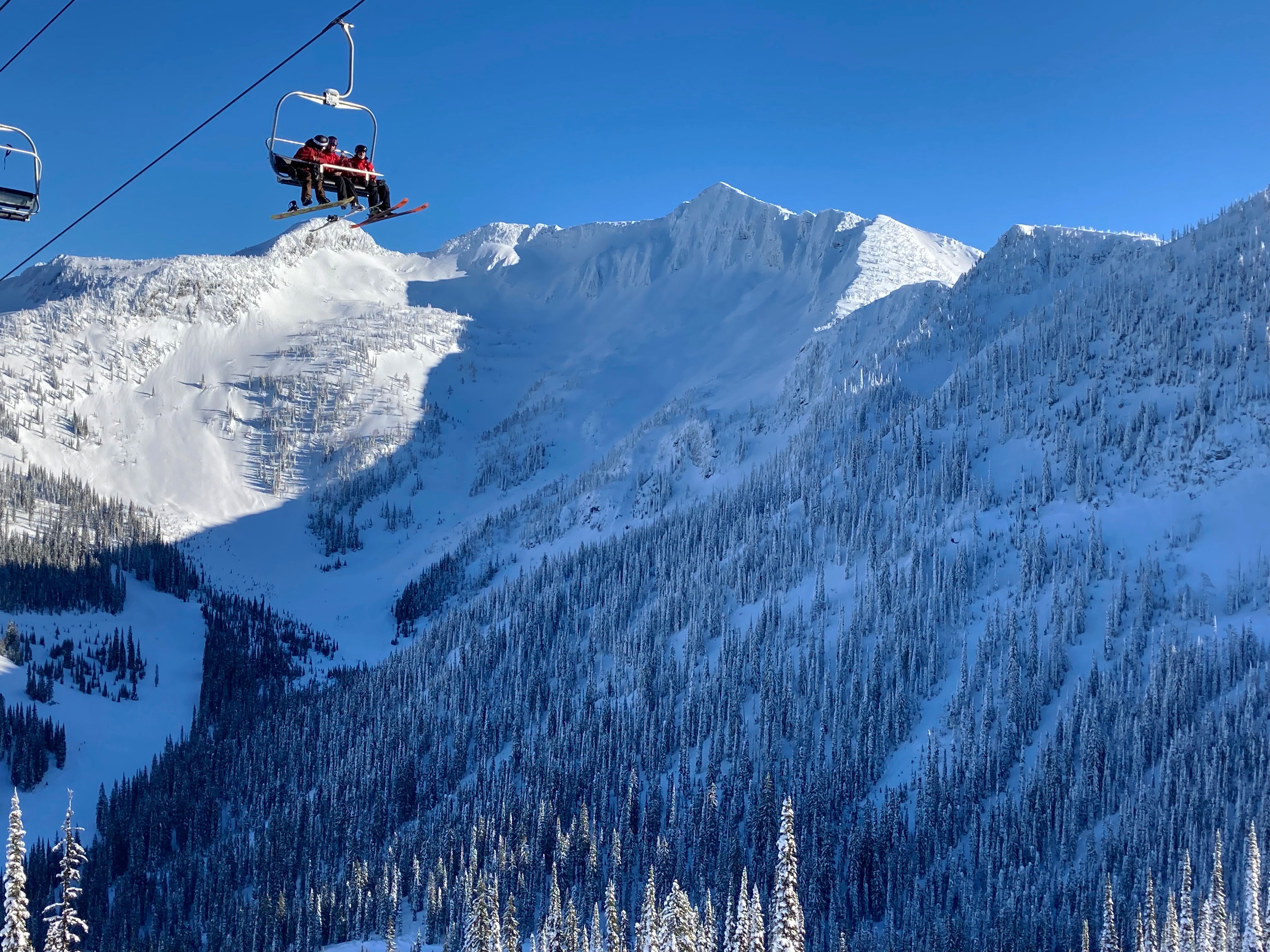
This sounds like an amazing adventure! Any post-scripts?